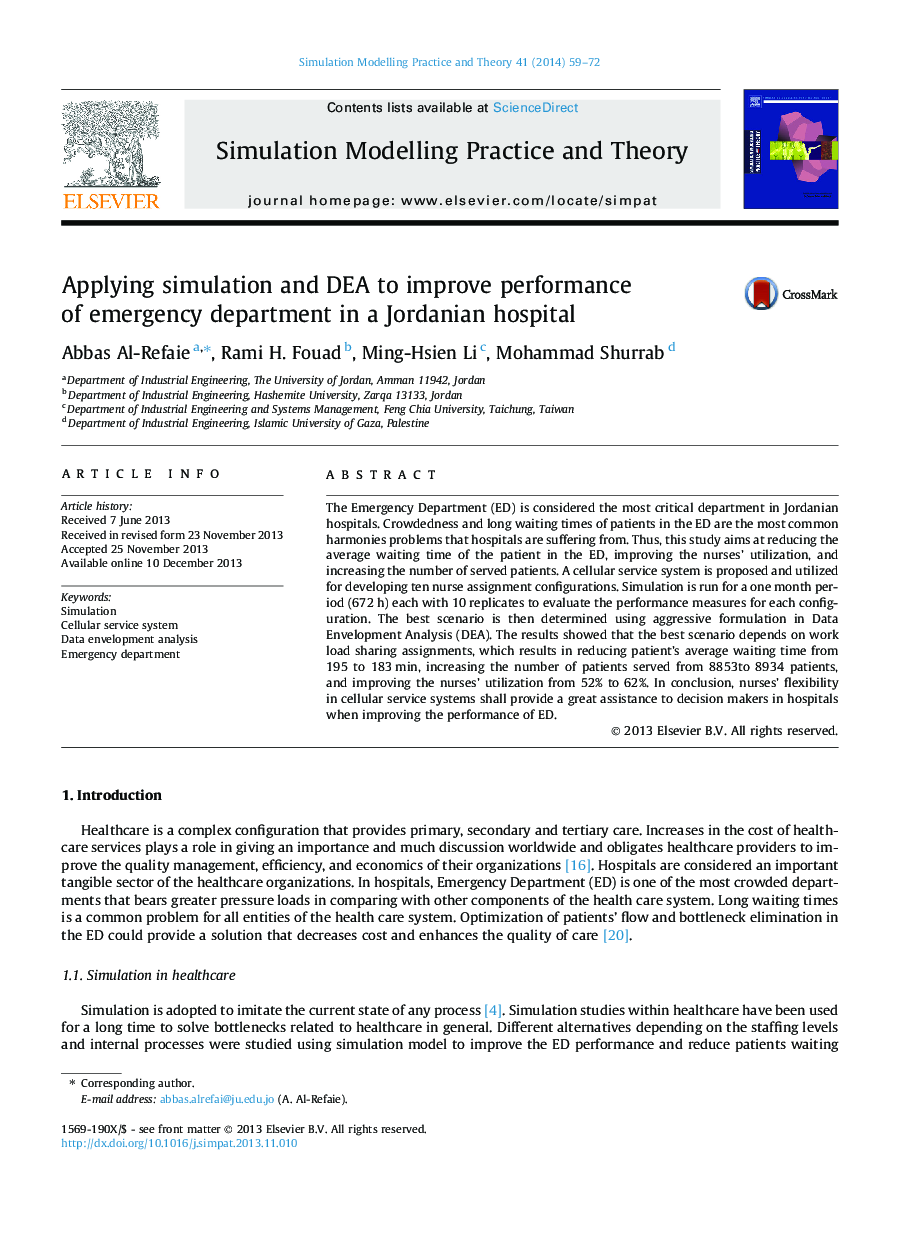| Article ID | Journal | Published Year | Pages | File Type |
|---|---|---|---|---|
| 493603 | Simulation Modelling Practice and Theory | 2014 | 14 Pages |
•The performance of emergency department in a Jordanian hospital is improved using simulation and data envelopment analysis.•A cellular service system is proposed and utilized for developing ten nurses’ assignment configurations.•Simulation runs are conducted for one month period each run with 10 replicates to evaluate performance of each configuration.•Aggressive formulation in data envelopment analysis is used to identify the best scenario.•The average waiting time is reduced from 195 to 183 min, increasing the number of patients served from 8853 to 8934 patients.
The Emergency Department (ED) is considered the most critical department in Jordanian hospitals. Crowdedness and long waiting times of patients in the ED are the most common harmonies problems that hospitals are suffering from. Thus, this study aims at reducing the average waiting time of the patient in the ED, improving the nurses’ utilization, and increasing the number of served patients. A cellular service system is proposed and utilized for developing ten nurse assignment configurations. Simulation is run for a one month period (672 h) each with 10 replicates to evaluate the performance measures for each configuration. The best scenario is then determined using aggressive formulation in Data Envelopment Analysis (DEA). The results showed that the best scenario depends on work load sharing assignments, which results in reducing patient’s average waiting time from 195 to 183 min, increasing the number of patients served from 8853to 8934 patients, and improving the nurses’ utilization from 52% to 62%. In conclusion, nurses’ flexibility in cellular service systems shall provide a great assistance to decision makers in hospitals when improving the performance of ED.
